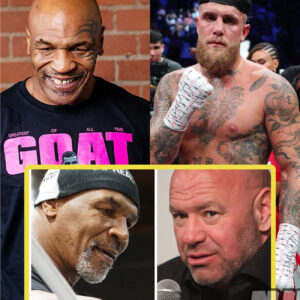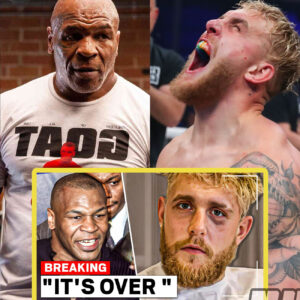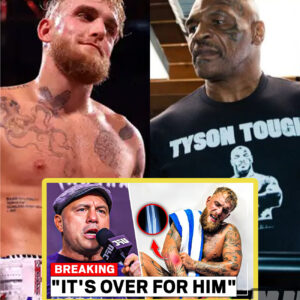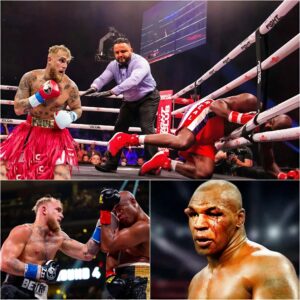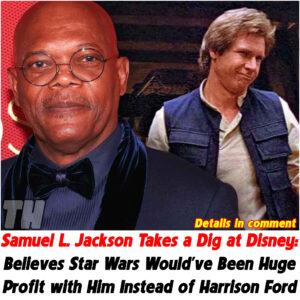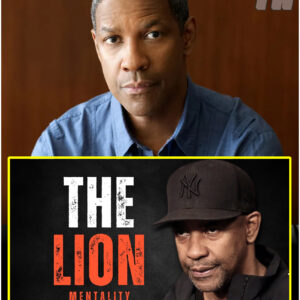The boxing world is no stranger to controversy and excitement, but in recent years, a new trend has emerged that is shaking up the sport like never before.
Enter influencer boxing—a phenomenon that blends the gritty athleticism of traditional boxing with the magnetic allure of social media celebrities and entertainers.

While some may view it as nothing more than a spectacle, there’s more to influencer boxing than meets the eye.
The rise of influencer boxing can be traced back to a few years ago when the first high-profile match set the internet ablaze, showcasing the potential for viral events that bridge the gap between the digital sphere and physical sports arenas.
What sets influencer boxing apart is not just the participants, who are often novices in the sport, but the unique cultural significance these events carry.
They serve as a battleground where online personas and real-world athleticism collide, offering a spectacle that appeals to both sports enthusiasts and followers of popular culture.
This surge in popularity has led to a series of headline-grabbing events, each drawing more attention than the last.
Influencer boxing has turned into a cultural phenomenon that transcends the traditional boundaries of the sport, making celebrities out of the fighters and generating significant mainstream media coverage.
But what drives the success of influencer boxing? It’s not just about putting on a good show—it’s about creating a highly lucrative ecosystem. Every aspect of influencer boxing is meticulously planned to optimize revenue generation.
Sponsorships play a crucial role, with brands eager to align themselves with the colossal reach and influence of these social media stars.
This partnership extends beyond mere logo placements, involving comprehensive promotional campaigns that tap into the influencers’ networks to drive unprecedented engagement.
Ticket sales are just the tip of the iceberg; the real gold mine lies in pay-per-view purchases, offering fans worldwide a front-row seat to the action from the comfort of their homes.
This digital approach not only expands the audience far beyond the physical limitations of the venue but also opens up a steady stream of income through exclusive content offerings leading up to the main event.
But why does influencer boxing often elicit outrage from traditionalists and purists of the sport? The sheer thought of pitting a social media powerhouse against a legendary athlete can seem absurd, stirring widespread discours.
Yet, it’s this very dialogue that fuels the fires of anticipation and viewership. The strategy of embracing controversy as a catalyst for engagement is deeply woven into the fabric of influencer boxing.
Furthermore, the role of social media in hype creation cannot be overstated. Platforms like Twitter, Instagram, and TikTok serve as powerful engines driving the anticipation surrounding each bout.
Fighters such as Jake Paul and Mike Tyson curate narratives that keep their followers glued to their screens, eagerly anticipating the next chapter in the saga.
Looking ahead, the future of influencer boxing is shimmering with potential. Cross-platform collaborations and advancements.
In streaming technology promise to elevate the sport to new heights, bringing fans closer to the action than ever before.
As influencer boxing continues to evolve and engage with the digital generation, its future is not just bright but boundless.
In conclusion, while influencer boxing may have its detractors, there’s no denying its impact on the sporting world. As the ring is set for an exhilarating journey, fans everywhere eagerly await the next chapter in this captivating saga.
News
(VIDEO) Dana White REACTS to Mike Tyson vs Jake Paul POSTPONED FIGHT
**Anderson Silva and Chael Sonnen: From Boxing Match to Hall of Fame Induction** In an unexpected turn of events, former MMA rivals Anderson Silva and Chael Sonnen…
(VIDEO) Mike Tyson Just ANNIHILATED Jake Paul And WARNED To FINISH Him!
**Iron Mike vs. The Problem Child: The Showdown of Eras** The boxing world is abuzz with the upcoming clash between two unlikely adversaries: the legendary Mike Tyson…
(VIDEO) MIKE TYSON SCARY NEW FOOTAGE!👀(FULL TRAINING) Mayweather, Lennox & Joe Rogan WORRIED for JAKE PAUL??
### Mike Tyson vs. Jake Paul: The Fight That Never Was The world of boxing thrives on spectacle, and few events captured the public’s imagination like the…
(VIDEO) Joe Rogan Just RIPPED Jake Paul After He Quit Mike Tyson Fight
### Jake Paul vs. Mike Tyson: The Fight That Never Was In a world where spectacle often triumphs over substance, Jake Paul’s announcement to fight Mike Tyson…
(VIDEO) Floyd Mayweather Just WARNED Jake Paul To CANCEL Might Tyson Fight
### Jake Paul vs. Mike Tyson: The Looming Showdown and Floyd Mayweather’s Dire Warning In the ever-dramatic world of boxing, a potential clash between social media sensation…
(VIDEO) Joe Rogan Just EXPOSED Jake Paul With LEAKED Audio Files For BRIBING The Referee
In an unexpected twist, a leaked video has surfaced showing a private match between Jake Paul and Mike Tyson, revealing that Paul had to pay approximately $100…
End of content
No more pages to load
